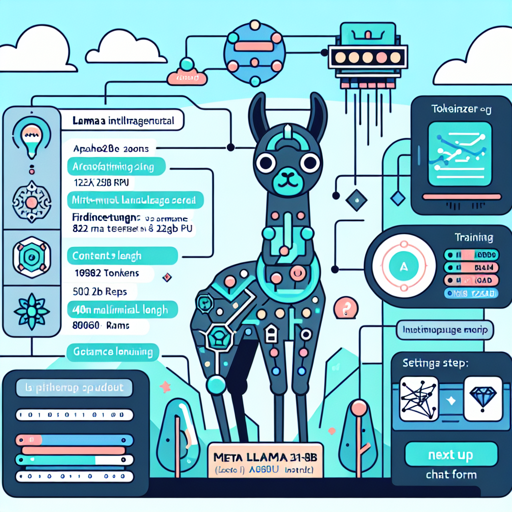In the realm of artificial intelligence, language models are essential for text generation and comprehensive query handling. This guide introduces you to the Llama 3.1-8B Instruct model, developed by vutuka, that can empower your applications with high-quality user interactions.
Overview of the Llama 3.1-8B Instruct Model
- Developed by: vutuka
- License: Apache-2.0
- Finetuned from Model: meta-llama/meta-llama-3.1-8b-instruct
- Max Content Length: 8192 tokens
- Max Steps: 800
- Training Time: 2h 22min 08s
Before embarking on your journey with Llama, ensure you have the right setup:
- 1 x RTX A6000
- 16 vCPU
- 58 GB RAM
- 150 GB Storage
Setting Up the Tokenizer & Chat Format
The tokenizer is crucial in ensuring that the input data is accurately processed. Here’s how to set it up:
from unsloth.chat_templates import get_chat_template
tokenizer = get_chat_template(
tokenizer,
chat_template="llama-3", # Supports various templates
mapping={
"role": "role",
"content": "content",
"user": "",
"assistant": "",
})This segment of code configures the tokenizer to interpret messages effectively, much like setting rules for a conversation so both parties understand each other.
Formatting Prompts for Conversation
Next, you need a function to format prompts and prepare conversation messages:
def formatting_prompts_func(examples):
convos = examples["messages"]
texts = [tokenizer.apply_chat_template(convo, tokenize=False, add_generation_prompt=False) for convo in convos]
return {"text": texts, }Think of it as a conversation starter kit; this function ensures that each message is dressed appropriately for a successful exchange.
Training Your Model with SFTTrainer
Now, let’s proceed to training our model. Below is the code for setting up the trainer:
trainer = SFTTrainer(
model=model,
tokenizer=tokenizer,
train_dataset=shuffled_dataset,
dataset_text_field="text",
max_seq_length=max_seq_length,
dataset_num_proc=2,
packing=False, # To speed up training for shorter sequences
args=TrainingArguments(
per_device_train_batch_size=2,
gradient_accumulation_steps=4,
warmup_steps=5,
max_steps=800,
do_eval=True,
learning_rate=3e-4,
log_level="debug",
bf16=True,
logging_steps=10,
optim="adamw_8bit",
weight_decay=0.01,
lr_scheduler_type="linear",
seed=3407,
output_dir="outputs",
report_to='wandb',
warmup_ratio=0.3,
),
)This configuration sets the stage much like a coach preparing athletes for a race, ensuring every setting – from warmup to logging – is optimized for success.
Using Inference with Llama CPP
The final step is to enable inference with your trained model. Thanks to the power of Unsloth and Hugging Face’s TRL library, your model can be trained remarkably quickly, even twice as fast!
...your inference code here...Troubleshooting Tips
As you use the Llama model, you might encounter challenges. Here are a few troubleshooting ideas:
- Issue with Tokenizer: Ensure you have properly mapped the roles and content. Double-check for typos in the chat template.
- Training Delays: If training is taking unusually long, review the dataset size and consider using the packing option to speed up the process.
- Inference Errors: Verify that the model and tokenizer are compatible and correctly configured.
For more insights, updates, or to collaborate on AI development projects, stay connected with fxis.ai.
Conclusion
With the Llama 3.1-8B Instruct model, you are now equipped to create powerful text generation functionalities. Embracing these tools and methodologies will elevate your AI projects to new heights.
At fxis.ai, we believe that such advancements are crucial for the future of AI, as they enable more comprehensive and effective solutions. Our team is continually exploring new methodologies to push the envelope in artificial intelligence, ensuring that our clients benefit from the latest technological innovations.

